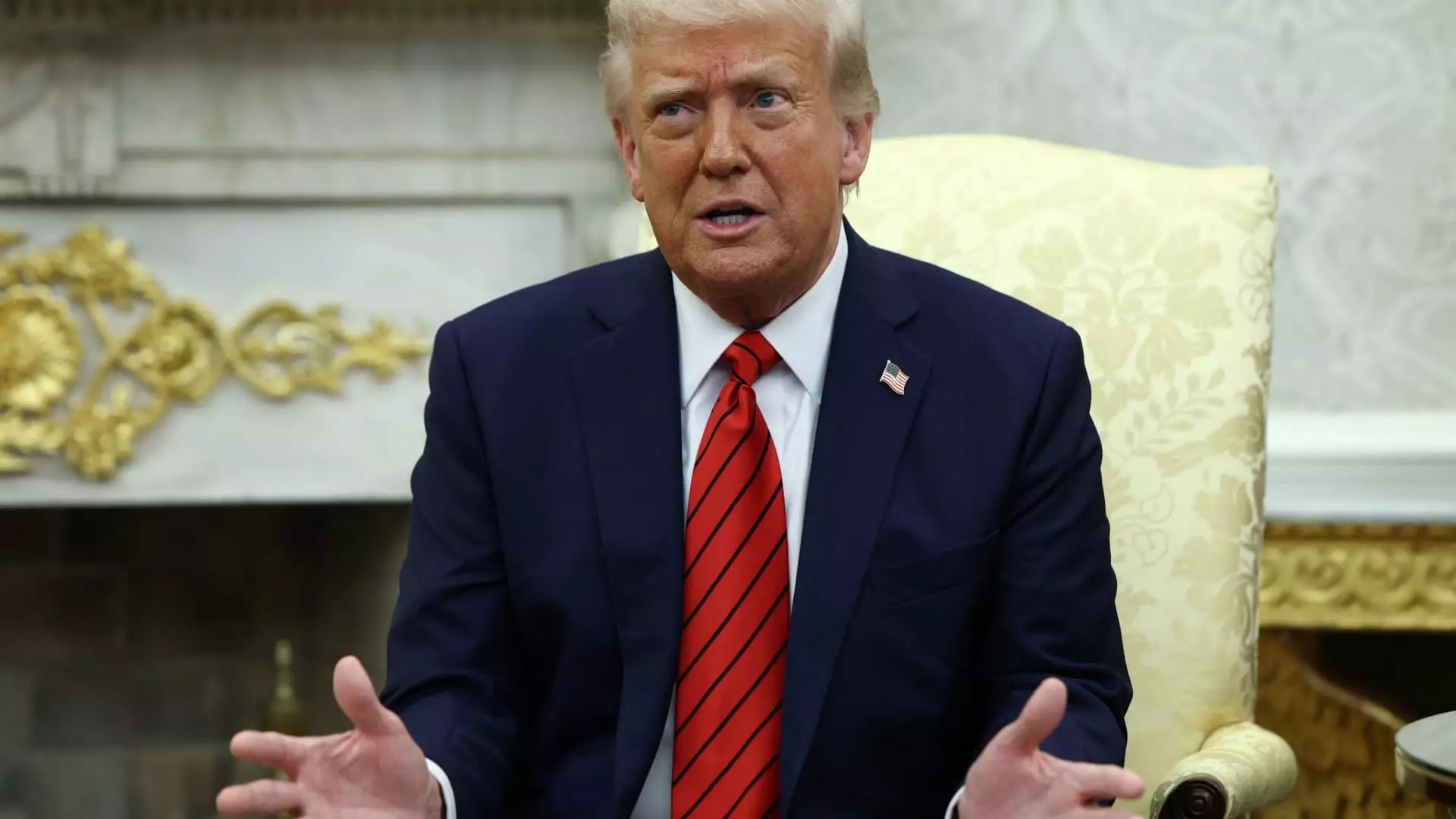In an economy that thrives on predictability, uncertainty can feel like a storm cloud hovering over investors’ heads. The recent panic unleashed by President Donald Trump’s announcement regarding tariffs has echoed loudly across trading floors, despite a notable cooling in general market fear. While on the surface, the stock market may appear stable, many investors still can’t shake off the apprehension that their beloved stocks will face collateral damage in an escalating trade war. The proverbial calm before the storm serves as a stark reminder that the stock market is very much a reflection of investor sentiment, swayed by external factors that are neither wholly foreseeable nor controllable.
The mixed signals from the White House are contributing to this unease. Statements about ongoing “reciprocal” tariff negotiations with various nations, including the likes of Japan, do not instill confidence when they lack concrete details or timelines. Investors crave clarity; without it, they remain anxious about unforeseen repercussions that could affect their portfolios. Consequently, such uncertainty fosters a climate of hesitation, compelling some investors to reassess their positions in the face of potentially adverse economic conditions.
The Ripple Effect of Tariff Talks
A significant facet of this anxiety is underscored by the real-time consequences of tariffs on individual stocks and sectors. Nvidia’s recent admission of a staggering $5.5 billion hit due to export restrictions serves as an alarm bell for many market players. The ramifications of leadership in technology reaching this scale highlight how vitally interconnected global trade relations are to individual companies. A 6.9% decline in Nvidia’s stock price isn’t just a mere fluctuation; it’s a telling warning about how delicate this web of economic interdependence can be.
Such volatility suggests that during tariff disputes, market unpredictability becomes the norm. Investors are forced to grapple with the understanding that today’s headlines might trigger tomorrow’s significant losses. This unpredictability is compounded by the fact that what was ostensibly a trade agreement discussion might have broader implications that stretch well into the tech sector, thus pushing company valuations into a fray of speculation and mistrust.
The Shift of Global Investor Sentiment
Moreover, there is a noticeable shift in global investor sentiment regarding U.S. assets, as pointed out by analysts. Disengaging from American stocks can be a sign of a broader shift away from perceived stability toward emerging markets deemed more favorable. Such a movement can put downward pressure on stocks and change the landscape in which American companies operate. The factor of fluctuating global opinions cannot be underestimated in its ability to steer market momentum.
When investors lose faith in U.S. market protections, especially in the context of erratic trade policies, sectors like technology and manufacturing can find themselves on shaky ground. The criticism leveled by experts suggests that short-term gains from temporary market conditions do little to enhance investor certainty. If anything, the current scenario exemplifies the risk of being caught in a backlash against an unpredictable economic strategy.
Predictions in Uncertain Times
As the earnings seasons roll in, corporate executives are placed at the frontlines of this unpredictability. How they articulate their forecasts can illuminate their companies’ potential exposures to existing trade tensions, an effort not all companies will be willing or able to navigate. United Airlines’ dual forecasting strategy may be one way to manage expectations, but not all companies will be equipped with such nimbleness.
Recent evidence shows that investors are increasingly unforgiving toward negative earnings revisions; the market’s ferocity against firms that tabulate worse-than-expected results is palpable. An analysis of the downward revisions indicated a staggering penalty rate that has not been observed over the last quarter-century. This reveals an important truth about our current moment: the market is not just keeping track — it is increasingly aggressive and short-tempered.
The Path Forward Amidst Turmoil
As these dynamics intertwine, one must ask: is it wise to simply wait for clarity before re-engaging with the market? Investors who scavenge for bargains in an environment thick with uncertainty might find the risk outweighing the reward. A calculated approach, grounded in the realities of current market turbulence and cautious optimism, may yield the best long-term strategies. As companies and investors alike wrestle with the implications of trade negotiations, one thing remains clear: navigating through this maze will require adeptness, foresight, and strategy like never before. As the stakes rise, so too does the need for astute decision-making to weather the storms ahead.

